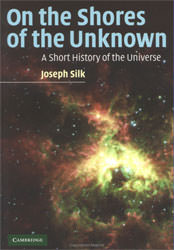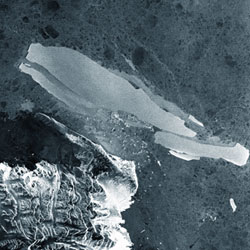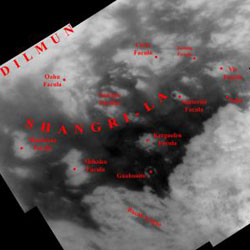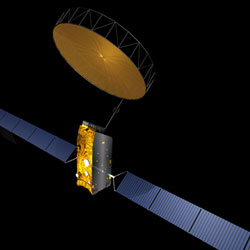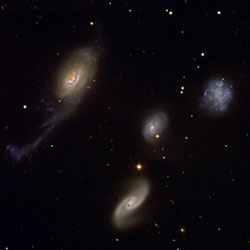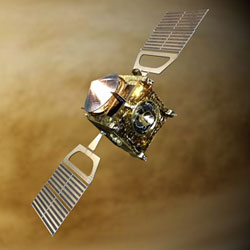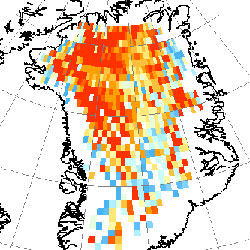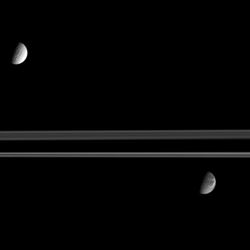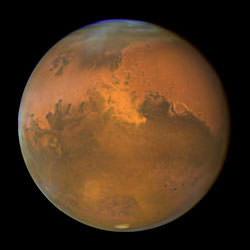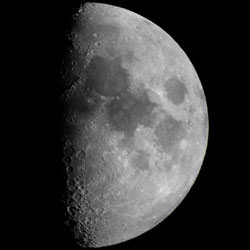
Our Moon. Image credit: Blackett Observatory. Click to enlarge.
Monday, November 7 – Tonight Mars is at opposition, meaning that it rises just as Sol sets. Be sure to be outside at twilight to catch the awesome appearance of Venus to the west/southwest and Mars rivaling it in the east. You don’t want to miss this outstanding pair.
While the bright planets will try to steal the show, no place on the lunar surface can steal your heart like the Caucasus Mountains. Located tonight along the terminator in the north, stop and really take the time to appreciate their beauty. Like the earthly Caucasus which stretches 1500 kilometers between the Black and Caspian Seas, these stunning mountains extend 500 kilometers between the lunar “seas” of Mare Frigoris and Mare Serenitatis. While most of us could never climb to the 5642 meter summit of Mt. Eibrus, we can match that with our eyes as we power up to look at small crater Callipus caught in Caucasus’ midst. The highest peak is to its west and rises to a stunning 5303 meters above the desolate surface.
Climb the mountains. Their slopes, enclaves and plateaus were formed by the same volcanic process as those bordering Asia Minor. Look for Aristoteles and Eudoxus to the north-east, sitting like small countries along the borders. Where your imagination takes you is 384,000 kilometers away…
Tuesday, November 8 – Born on this day 1656, the great Edmund Halley made his mark on history as he became best known for determining the orbital period of the comet which bears his name. English scientist Halley, had many talents however, and in 1718 discovered what were referred to as “fixed stars”, actually displayed proper motion. If it were not for Halley, Sir Isaac Newton may never have published his now famous work on the laws of gravity and motion. Tonight let’s honor Halley by observing one of the all time greatest of double stars in motion – Almach.
Gamma Andromedae is the last in the chain of bright stars that extends from the northern-eastern corner of the “Square of Pegasus”. It may have been discovered to be a double as early as 1788, but F.W. Struve was the first to record its measurements in 1830. To even the smallest of telescopes, its golden primary is easily separated from the blue-green secondary, but for larger scopes – there’s something more.
In 1842, Struve discovered the companion star is itself a very close double of similar magnitude and spectral type. In 1982 they reached their maximum separation of .5, but it is possible to see them as companion stars thanks to their highly ellipitcal orbits. The brighter of the two is also a spectroscopic binary, making this a quadruple system. The light you see tonight from this beautifully colored pair left 3 years after Halley’s death.
Wednesday, November 9 – Be sure to take binoculars out just after sunset to catch Antares and Mercury within two degrees of each other. Both will be very low on the horizon, so don’t wait too long…
Tonight the Moon will be closest to Earth, so let’s get a good close look at striking trio of craters just south of central along the terminator. The smallest and youngest of the three is Arzachel at the southern end of the chain and far larger and older Ptolemy is to the north. Look closely at central crater Alphonsus, for it is the only crater to have photographic proof that changes do occur on the lunar surface. On October 26, 1956 a photo was taken showing a strange cloud just east of its central peak. Russian astronomer, Nikolai Kozyrev was fascinated and doggedly observed and photographed a changing Alphonsus until he had a huge success of the night of November 2, 1958. In taking a series of spectrograms (not an easy feat for those times and equipment), he successfully captured unmistakable evidence of a cloud of carbon molecule “outgassing”. Spaseba!
Today is the birthdate of Carl Sagan. Born in 1934 Sagan was an American planetologist, exobiologist, popularizer of science and astronomy, and novelist. His influential work and enthusiasm inspired us all. In his memory, tonight we’ll have a look at Melotte 25.
Most of you will recognize this expansive open cluster as the V-shaped group that forms the “head” of Taurus – more commonly referred to as the Hyades. Hundreds of mixed magnitude stars are contained inside this fist-sized cluster. The brightest true member is Theta 2, followed by its slightly dimmer counterpart – Theta 1. You’ll find this pair easily with binoculars just south of orange Aldeberan, which is merely a foreground star in this stellar play. At roughly 150 light years away, it’s the closest open cluster known after the Ursa Major group. At 400 million years old, it moves away from us and perhaps carries the spirit of Sagan with it… “We are all just star stuff.”
Thursday, November 10 – Tonight no crater on the Moon will call louder than the mighty Copernicus – so let’s answer.
With its thick walls and central peak, it is wonderfully picturesque, but what’s around the mound? To the north is two part crater – Gay-Lussac. Look for its stunning rimae cutting diagonally away to the southwest. To the south is an even smaller double crater – Fauth. If you want a true challenge, power up to the max. Look inside of Copernicus on the east wall for the very tiny strike of crater A!
Friday, November 11 – A true observer was born on this day 1875. His name was Vesto Slipher, who spent some very quality time with the 60″ and 100″ telescopes on Mt. Wilson. Slipher was the first to photograph galaxy spectra and measure their redshifts, which led to the discovery of the expansion of the universe by Edwin Hubble.
Tonight let’s take a look at a galaxy as we head once again towards Andromeda and M31. Although the moonlight will prevent us from seeing great details, it is still quite amazing to know that we are able to see across 2.2 million light years. Containing over 300 billion stars, its one of the largest galaxies known. In 1912, Slipher analyzed it spectroscopically to discover its blue shift: “The magnitude of this velocity, which is the greatest hitherto observed, raises the question whether the velocity-like displacement might not be due to some other cause, but I believe we have at the moment we have no other interpretation for it. Hence we may conclude the Andromeda Nebula is approaching the solar system with a velocity of about 3000 kilometers per second.”
Saturday, November 12 – Wouldn’t we all have loved to have been there in 1949 when the first scientific observations were made with the Palomar 5-meter (200-inch) telescope? Or to have seen what Voyager 1 saw as it made its closest approach to Saturn on this date in 1980? Or even better, to have been around in 1833 – the night of the Great Leonid Meteor Shower! But this is here and now, so let’s make our own mark on the night sky as we view the Northern Taurid meteor shower.
Already making headlines around the world for producing extremely bright fireballs known as bolides, this particular stream belongs to debris left by periodic comet Encke. According to meteor experts Asher and Clube, 2005 could quite possibly be the year we pass through the “swarm” – a particularly rocky pocket of materials capable of producing these spectacular meteors. Although the Moon will greatly interfere with fainter members, a bolide can be spotted even through hazy cloud cover!
While you’re out, be sure to also keep watch for members of the Pegasid meteor shower, whose radiant is roughly near Square. This stream endures from mid-October until late November and used to be quite spectacular. Watch for the peak on November 17.
Sunday, November 13 – Today is the birthday of James Clerk Maxwell. Born in 1831, Maxwell was a leading English theoretician in electromagnetism and the nature of light. On this day in 1971, Mariner 9 becomes the first spaceprobe to orbit Mars.
Tonight let’s have a look at again at orbiting Mars. Depending on your observing time, perhaps you’ll catch the deep wedge of Syrtis Major punctuated by the Hellas Basin. For another, it might be the “moose antler” look of Mare Cimmerium or the red fields of Amazonis. Still others might catch the “fingers” of Mare Erythraeum reaching toward Chryse… No matter what time you look, it’s time well spent.
Until next week? May all your journeys be at light speed… ~Tammy Plotner

